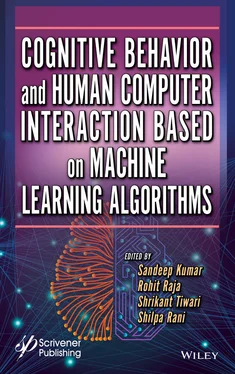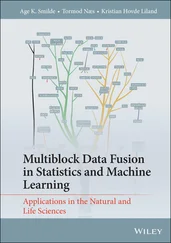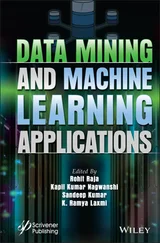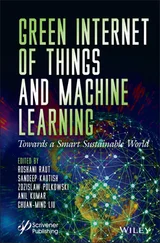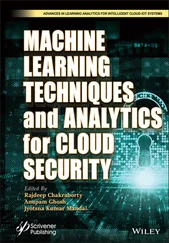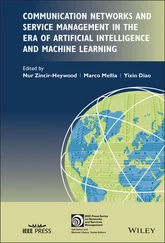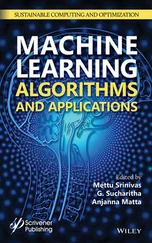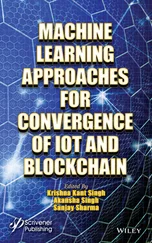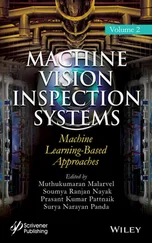1 Cover
2 Title page
3 Copyright
4 Preface
5 1 Cognitive Behavior: Different Human-Computer Interaction Types 1.1 Introduction: Cognitive Models and Human-Computer User Interface Management Systems 1.2 Cognitive Modeling: Decision Processing User Interacting Device System (DPUIDS) 1.3 Cognitive Modeling: Decision Support User Interactive Device Systems (DSUIDS) 1.4 Cognitive Modeling: Management Information User Interactive Device System (MIUIDS) 1.5 Cognitive Modeling: Environment Role With User Interactive Device Systems 1.6 Conclusion and Scope References
6 2 Classification of HCI and Issues and Challenges in Smart Home HCI Implementation 2.1 Introduction 2.2 Literature Review of Human-Computer Interfaces 2.3 Programming: Convenience and Gadget Explicit Substance 2.4 Equipment: BCI and Proxemic Associations 2.5 CHI for Current Smart Homes 2.6 Four Approaches to Improve HCI and UX 2.7 Conclusion and Discussion References
7 3 Teaching-Learning Process and Brain-Computer Interaction Using ICT Tools 3.1 The Concept of Teaching 3.2 The Concept of Learning 3.3 The Concept of Teaching-Learning Process 3.4 Use of ICT Tools in Teaching-Learning Process 3.5 Conclusion References
8 4 Denoising of Digital Images Using Wavelet-Based Thresholding Techniques: A Comparison 4.1 Introduction 4.2 Literature Survey 4.3 Theoretical Analysis 4.4 Methodology 4.5 Results and Discussion 4.6 Conclusions References
9 5 Smart Virtual Reality–Based Gaze-Perceptive Common Communication System for Children With Autism Spectrum Disorder 5.1 Need for Focus on Advancement of ASD Intervention Systems 5.2 Computer and Virtual Reality–Based Intervention Systems 5.3 Why Eye Physiology and Viewing Pattern Pose Advantage for Affect Recognition of Children With ASD 5.4 Potential Advantages of Applying the Proposed Adaptive Response Technology to Autism Intervention 5.5 Issue 5.6 Global Status 5.7 VR and Adaptive Skills 5.8 VR for Empowering Play Skills 5.9 VR for Encouraging Social Skills 5.10 Public Status 5.11 Importance 5.12 Achievability of VR-Based Social Interaction to Cause Variation in Viewing Pattern of Youngsters With ASD 5.13 Achievability of VR-Based Social Interaction to Cause Variety in Eye Physiological Indices for Kids With ASD 5.14 Possibility of VR-Based Social Interaction to Cause Variations in the Anxiety Level for Youngsters With ASD References
10 6 Construction and Reconstruction of 3D Facial and Wireframe Model Using Syntactic Pattern Recognition 6.1 Introduction 6.2 Literature Survey 6.3 Proposed Methodology 6.4 Datasets and Experiment Setup 6.5 Results 6.6 Conclusion References
11 7 Attack Detection Using Deep Learning–Based Multimodal Biometric Authentication System 7.1 Introduction 7.2 Proposed Methodology 7.3 Experimental Analysis 7.4 Conclusion and Future Scope References
12 8 Feature Optimized Machine Learning Framework for Unbalanced Bioassays 8.1 Introduction 8.2 Related Work 8.3 Proposed Work 8.4 Experimental 8.5 Result and Discussion 8.6 Conclusion References
13 9 Predictive Model and Theory of Interaction 9.1 Introduction 9.2 Related Work 9.3 Predictive Analytics Process 9.4 Predictive Analytics Opportunities 9.5 Classes of Predictive Analytics Models 9.6 Predictive Analytics Techniques 9.7 Dataset Used in Our Research 9.8 Methodology 9.9 Results 9.10 Discussion 9.11 Use of Predictive Analytics 9.12 Conclusion and Future Work References
14 10 Advancement in Augmented and Virtual Reality 10.1 Introduction 10.2 Proposed Methodology 10.3 Results 10.4 Conclusion References
15 11 Computer Vision and Image Processing for Precision Agriculture 11.1 Introduction 11.2 Computer Vision 11.3 Machine Learning 11.4 Computer Vision and Image Processing in Agriculture 11.5 Conclusion References
16 12 A Novel Approach for Low-Quality Fingerprint Image Enhancement Using Spatial and Frequency Domain Filtering Techniques 12.1 Introduction 12.2 Existing Works for the Fingerprint Ehancement 12.3 Design and Implementation of the Proposed Algorithm 12.4 Results and Discussion 12.5 Conclusion and Future Scope References
17 13 Elevate Primary Tumor Detection Using Machine Learning 13.1 Introduction 13.2 Related Works 13.3 Proposed Work 13.4 Experimental Investigation 13.5 Result and Discussion 13.6 Conclusion 13.7 Future Work References
18 14 Comparative Sentiment Analysis Through Traditional and Machine Learning-Based Approach 14.1 Introduction to Sentiment Analysis 14.2 Four Types of Sentiment Analyses 14.3 Working of SA System 14.4 Challenges Associated With SA System 14.5 Real-Life Applications of SA 14.6 Machine Learning Methods Used for SA 14.7 A Proposed Method 14.8 Results and Discussions 14.9 Conclusion References
19 15 Application of Artificial Intelligence and Computer Vision to Identify Edible Bird’s Nest 15.1 Introduction 15.2 Prior Work 15.3 Auto Grading of Edible Birds Nest 15.4 Experimental Results 15.5 Conclusion Acknowledgments References
20 16 Enhancement of Satellite and Underwater Image Utilizing Luminance Model by Color Correction Method 16.1 Introduction 16.2 Related Work 16.3 Proposed Methodology 16.4 Investigational Findings and Evaluation 16.5 Conclusion References
21 Index
22 End User License Agreement
1 Chapter 1 Figure 1.1Cognitive behavioral elements of broad view of human-computer interfa... Figure 1.2Decision processing system user interface device management as extern... Figure 1.3Cognitive modeling process in the visualization decision processing u... Figure 1.4Supporting cognitive model for the interaction of decision supportive... Figure 1.5Basic elements of management information user interactive device syst... Figure 1.6Model of memory, information passes through distinct stages in order ...
2 Chapter 2 Figure 2.1The utility of HCI. Figure 2.2The basic of HCI and related spaces. Figure 2.3The making of intelligent ease of use. Figure 2.4The connected fields of HCI and ease of use designing. Figure 2.5Pictured models of smart devices, (a) Model-1 (b) Model-2 (c) Model-3...
3 Chapter 3 Figure 3.1Human brain bisected in the sagittal plane. Figure 3.2Functional areas of the human brain. Figure 3.3Parts of the human ear. Figure 3.4Regenerative feedback system of the teaching-learning process. Figure 3.5Conceptual diagram of the teaching-learning process. Figure 3.6Structure of a neuron. Figure 3.7Block diagram of a typical neurofeedback system. Figure 3.8BCI architecture.
4 Chapter 4 Figure 4.1PDF of Gaussian noise. Figure 4.2Single-level decomposition of 2D image. Figure 4.3Single-level DWT decomposition. Figure 4.4Three-level DWT decomposition. Figure 4.5Single-level composition step of four sub-images. Figure 4.6Filter arrangement for the dual-tree complex wavelet transform. Figure 4.7Hard thresholding scheme: (a) original signal and (b) after hard thre... Figure 4.8Soft thresholding scheme: (a) original signal and (b) after soft thre... Figure 4.9Neighborhood window centered at thresholded wavelet coefficient. Figure 4.102 x 2 block partition for a wavelet sub-band. Figure 4.11Image denoising using DTCWT-based thresholding technique. Figure 4.12Flow chart for the wavelet-based thresholding technique. Figure 4.13Standard gray images (512 × 512): (a) lena image; (b) barbara image;... Figure 4.14(a) Noisy image (noise level = 10); (b) Denoise image (SURE shrink);... Figure 4.15PSNR values obtained various thresholding techniques. Figure 4.16SSIM values obtained various thresholding techniques.
Читать дальше
